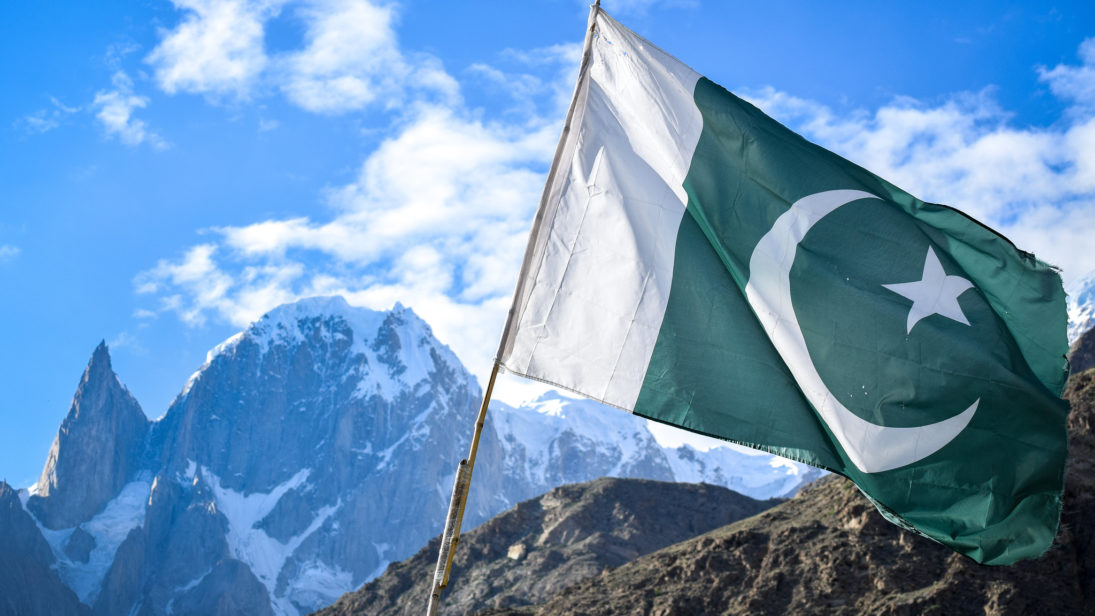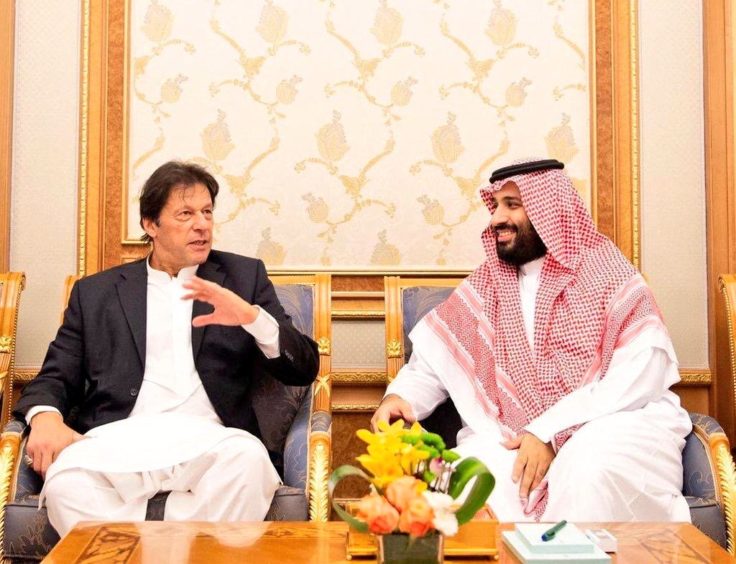
The outbreak of COVID-19 made 2020 a tough year for governments around the world. Internal political strife, rising religious extremism, poor socioeconomic growth, and disordered policymaking made it even tougher for Pakistan. At the diplomatic front, Pakistan’s foreign policy goals of having more influence on its western border, receiving praise for its role in Afghanistan, improving ties with the United States, and keeping a neutral position in both Iran-Saudi rivalry and the U.S.-China contest have largely been met. However, with the stalemate in the Afghan peace process, a new administration in the United States, and the likely escalation of conflicts in the Middle East and Asia, Pakistan will need to be particularly cautious in its foreign policy approach in 2021. Moreover, Pakistan has not received much success in strengthening its diplomatic position vis-à-vis India and, despite a robust campaign, has not won the support of the international community on the Kashmir dispute. To address these external challenges, Pakistani policymakers have to look inward, where its major weaknesses lie.
The Internal Fault Lines
COVID-19 dominated Pakistan’s policy concerns in 2020—Pakistan was among the first few countries to report positive cases of the viral infection. As the cases started increasing, the Imran Khan-led Pakistan Tehreek-e-Insaaf (PTI) government was intensely criticized for its inability to devise a coherent policy. The health crisis also illustrated the policy divide between federal and provincial governments. Particularly in Sindh, the Pakistan Peoples Party (PPP) pushed for stricter lockdown policies while the PTI, hesitant of the potential economic impact, condemned the lockdown. Eventually, all provincial governments consensually agreed to implement Khan’s policy of a “smart lockdown” and, from May onwards, started gradually lifting lockdown restrictions. Mysteriously, a month after lifting the lockdown, the number of cases started declining. The government believed its smart lockdown policy, which pushed for strict adherence to Standard Operating Procedures (SOPs) instead of a nation-wide lockdown, flattened the curve. However, as the public rarely followed SOPs, it remains unclear as to how Pakistan was able to counter the first wave of COVID-19.
Now, as the second wave of COVID-19 hits Pakistan, the launch of the opposition-led Pakistan Democratic Movement (PDM) to oust Imran Khan’s government has not only fueled political instability but has also become a threat to the wellbeing of the nation’s citizens. Meanwhile, the economy is experiencing a constant decline owing to this instability and health crisis. The economic impact of growing socio-political instability is concerning; falling GDP growth, rising consumer prices, and the sharpening depreciation of currency illustrate the need for political unity in the country.
When it comes to national security, terrorist attacks have considerably declined in the last few years. Yet, several bomb blasts in Balochistan, an attack on an opposition party’s rally in Karachi, and an attempted attack on the Karachi Stock Exchange this year have revived concerns over the continued presence of terrorist outfits in the country. Such terrorist activities could pose problems for Pakistan in the future as, despite taking some measures against money laundering and terrorism financing, there is still a lot left to be done to remove Pakistan’s name from the Financial Action Task Force (FATF) grey list.
The rise of Tehreek-e-Labaik Pakistan, an extreme right-wing political party that enjoys significant support from the masses, poses a serious challenge to both political stability and the internal security of Pakistan.
Notably, the extremist ideologies that fuel terrorist attacks surged this year. In September, mainstream Sunni religious parties like Jamaat-e-Islami and Jamiat Ulema-e-Islam held a rally in front of the parliament house in Islamabad, raising slogans of sectarian hate speech. There has been an increase in the number of judicial cases of blasphemy and extrajudicial killings motivated by blasphemy. The rise of Tehreek-e-Labaik Pakistan, an extreme right-wing political party that enjoys significant support from the masses, poses a serious challenge to both political stability and the internal security of Pakistan.
The External Challenges
In contrast to its domestic policy, Pakistan’s foreign policy in 2020 was more coherent, mainly due to its improved civil-military relationship under the Imran Khan-led government. Specifically, Pakistan was able to secure its foreign policy objectives in Afghanistan and obtain a prominent role in the region by using its influence over the Taliban to facilitate the U.S.-Taliban talks in Doha and to provide support for the intra-Afghan dialogue. Throughout the year, key representatives from the Afghan government, including Afghan Peace Envoy Abdullah Abdullah and Gulbadeen Hekmatyar, as well as Zalmay Khalilzad – the U.S. special representative for Afghanistan – made several important visits to Pakistan. The Taliban also had an official meeting in Islamabad just before the onset of the intra-Afghan dialogue in Doha. Having both political and economic stakes in fostering peace in Afghanistan, Pakistan’s current strategy seems to be to establish a new coalition government in Kabul with the Taliban having a significant share in power. Hence, Pakistani policymakers are apprehensive about the current stalemate in the dialogue process reflected in Imran Khan’s speech on his first official visit to Kabul—he explicitly supported a ceasefire between the two Afghan parties and urged to “do everything, whatever is possible” to establish peace in Afghanistan.

The diplomatic success in Afghanistan aided in improving U.S.-Pakistan relations. However, as the United States gradually withdraws its troops from Afghanistan and diverts its focus to its power competition with China, the principle driver in the Pakistan-U.S. relationship is not Afghanistan but Pakistan’s growing economic, security, and political ties with China. While the United States remains one of its top trading partners, Pakistan views Chinese investment under the China-Pakistan Economic Corridor as pivotal to its economic growth. Indo-centric security concerns of Pakistan also influence the Pakistan-China military relation, a domain in which the United States cannot do much for Pakistan. For now, as contended by the Prime Minister, Pakistan is seeking to maintain a neutral position between the two global powers. This balancing act could give Pakistan a unique status in South Asia—it can regain its role as a facilitator of back-channel communication between China and the U.S.
In the Middle East, Pakistan has been using a similar balancing strategy between Iran and Saudi Arabia for the past several years. 2020 marked a challenging year for Pakistan’s neutrality, as the year began with the assassination of Iranian Quds Force commander Qassem Soleimani. Saudi Arabia pushed Pakistan to declare a stronger position against Iran, but Pakistan tried to maintain neutrality by offering to mediate. The objective was simple: convincing both countries that Pakistan’s diplomatic relations with the other could serve their interest in the future, if and when they seek a negotiated settlement to their dispute. However, such a strategy would not work in the Middle East unless both countries desire peace in the region.
Another blow to Pakistan-Saudi Arabia ties was Saudi Arabia’s refusal to grant Pakistan’s request for a special meeting of the Council of Foreign Ministers of the Organization of Islamic Cooperation (OIC) on Kashmir. The relationship suffered significantly, as Pakistan’s Foreign Minister Shah Mehmood Qureshi issued a critical statement on OIC’s inaction on the Kashmir issue. However, most analysts agreed that Pakistan would continue to seek economic support from Riyadh, even if it fails to get much political support. Hence, with the possible escalation of conflict in the Middle East, Pakistan needs a holistic strategy that reduces economic reliance on one bloc. To that end, Pakistan must deal with internal issues of economic mismanagement and sectarianism to develop an independent foreign policy based on national interests.
While Pakistan achieved some key foreign policy goals on the diplomatic front in 2020, next year is likely to pose more challenges for the country.
On the eastern border of Pakistan, the situation remained volatile in 2020 after the Balakot strike last year, with a recorded rise in ceasefire violations. Meanwhile, as tensions rose along the India-China border in June, Pakistan used this to highlight Indian actions in Kashmir and its stance on the disputed status of Kashmir. In addition to a robust diplomatic campaign against Indian policies in Kashmir, Pakistan has possibly revamped its efforts in supporting the Kashmir insurgency, as is evident from the intensification of violence in the Kashmir valley. In the long-run, this strategy could re-escalate Indo-Pakistan tensions—a risk Islamabad is taking to discredit Indian claims over Kashmir. A better strategy would be to improve Pakistan’s image in the world through strengthening democratic and liberal institutions in the country and using diplomatic, rather than military, channels to resolve issues with India. The COVID-19 pandemic and the revival of SAARC temporarily halted escalation between India and Pakistan and increased the likelihood of regional cooperation. However, this was a temporary solution to a volatile bilateral relation—the two countries need more than a humanitarian health crisis to bring peace in South Asia.
A Challenging Year Ahead
While Pakistan achieved some key foreign policy goals on the diplomatic front in 2020, next year is likely to pose more challenges for the country. Pakistan’s significance in Afghanistan hinges on the success of the intra-Afghan dialogue and its relationship with the United States may suffer due to its ties with China. Hostile relations with India are likely to aggravate as chances of bilateral talks decline. Pakistan’s neutral position in the Middle East might also worsen with the possible spike in the Iran-Saudi conflict as Pakistan seeks improved ties with Saudi Arabia. The main challenges in the year ahead, however, stem from inside the country where growing political instability, religious extremism, and economic crises are continuously demonstrating the inefficiency of the federal government and limiting the country’s foreign policy choices to ones that prevent further destabilization of its internal economic and security situations.
Editor’s Note: SAV contributors from across the subcontinent recap the most significant political, economic, and strategic developments in South Asia in 2020 and analyze what opportunities and challenges lie ahead for each country in 2021. Read the full series here.
***
Image 1: Teseum via Flickr
Image 2: Pakistan PMO via Twitter


